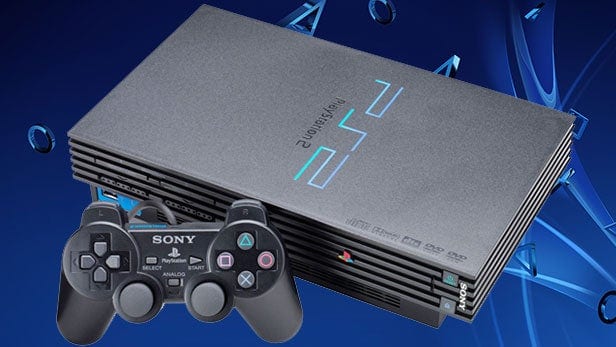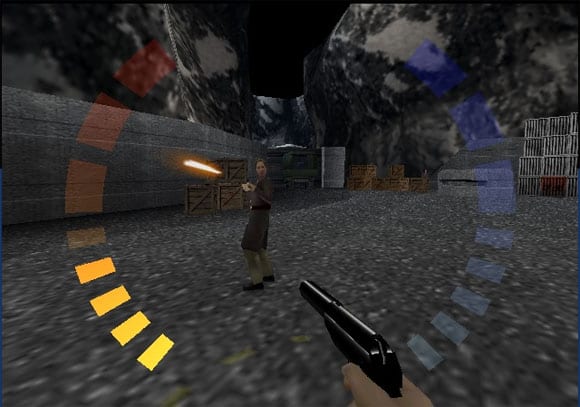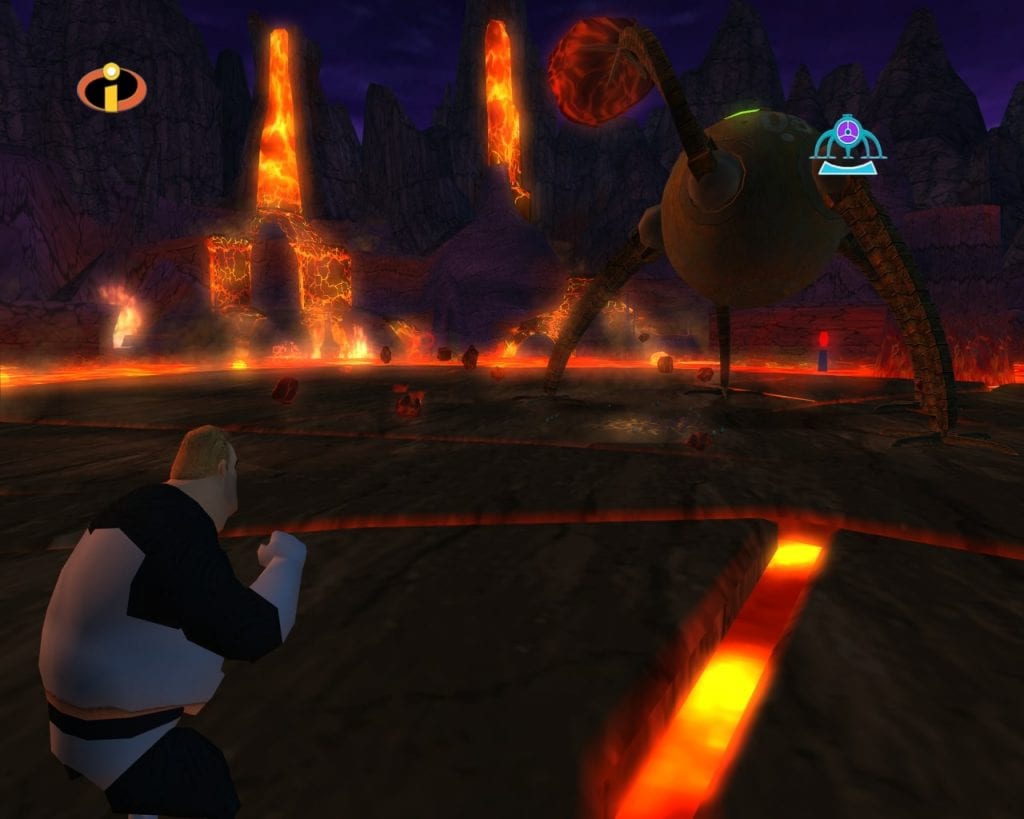The sixth generation of consoles is known for achieving many things in a relatively small six to eight year window. The original Xbox ushered in a new age of console-based shooters with Halo, the GameCube saw a spectacular line-up of first party titles ranging from Luigi’s Mansion to Super Smash Bros. Melee, and the PlayStation 2 managed to dupe parents worldwide into buying their kids a console under the guise that it was a cheap DVD player. But the sixth generation, especially the PS2, still holds a very special place in the hearts of gamers around the world for one main reason: licensed games.
Licensed games were not something new or exclusive to the sixth generation of consoles, with several franchises like Star Wars, Indiana Jones, and Die Hard having made a decent impact on the original PlayStation and the PC. However, as the PS2 gained popularity at the speed of a freight train, Hollywood started to take notice more than they ever had before. It wasn’t long before every popular franchise and every new movie release got their own video game spin-off.
Opening The Floodgates
Before the PlayStation 2 released in 2000, licensed console games were few and far between, with the quality of each title being even more sporadic. Some titles did stand out from the crowd of mediocrity though, like the Batman games on the Amiga, and the Alien Trilogy game for the PlayStation, Sega Saturn, and PC. It is fair to say that during the 80s and early 90s licensed games were not generally viewed as high-end ‘must have’ titles. That all changed with the release of GoldenEye 007 in 1997.
For anyone with a Nintendo 64, GoldenEye was the game to have. An excellently paced single-player campaign, surprisingly decent graphics and character models, and innovative first-person-shooter mechanics saw GoldenEye sky-rocket to the top of the charts. Pair all of that with a local split-screen multiplayer mode that ended as many friendships as it began, and you have yourself the first truly successful top-tier licensed video game.
What set GoldenEye aside from the slew of other licenced games was the simple fact that, at its core, it was a good video game. Thanks largely in part to Rare’s work with the 007 license, developers seemingly cottoned on to the idea that brand recognition alone wouldn’t sell a video game, but it did have the ability to make it more successful than anyone could have imagined.
Well The Games Start Coming and They Don’t Stop Coming
Think of a popular movie franchise—undoubtedly, it had a PS2 game attached to it. Now think of an unpopular movie franchise—I bet that has a PS2 game too. The release of the PS2 saw licensed games being produced at an ungodly rate, with extremely varied results. In general though, the PS2 had more than its fair share of excellent licensed games. In fact, some of the most fondly remembered PS2 games fit into the licensed game category.
Spider-Man 2 (2004) is a game that comfortably resides at the top of most people’s lists of favourite PS2 games. Spider-Man 2 managed to elevate itself above the “just a movie tie-in” connotation by doing exactly what GoldenEye did almost a decade before. The game managed to innovate and provide an experience that was truly unique. Spider-Man had plenty of video game outings by 2004 but none managed to capture the frenetic energy of swinging through a crowded New York City like Spider-Man 2 did. The game captured the essence of its movie counterpart so well by imitating the lighting and the tone, by getting Tobey Maguire and Kirsten Dunst to reprise their roles, and by expanding upon the story of the movie rather than just rehashing it.
The sixth generation of consoles managed to capture this atmosphere and essence with absolute ease when compared to prior generations. While they may not look so great when revisiting them today, the overall presentation and the use of cinematic cutscenes in some licensed games went a long way in making the game feel like a high-quality product. When zipping through New York in Spider-Man 2 it’s easy to get lost in the game as the overall presentation acts as a loving recreation of the movie’s set design.
In no game is appropriate set design and tone more evident than in Star Wars: Battlefront II (2005). Pandemic’s Star Wars: Battlefront II is a game that perfectly captures the essence of the Star Wars movies. Battlefront II transports the player directly to the frontlines of an iconic Star Wars battlefield. Locations like Hoth, the Death Star, Geonosis and more were given sprawling video game maps that acted as playgrounds for any fan. With the addition of the movies’ instantly-recognisable John Williams score, a whole host of classic heroes and villains being fully playable, and sound design that would pull the ears off a Gundark, Star Wars: Battlefront II cemented itself as one of the greatest licensed video games of all time.
The hits didn’t stop there. James Bond got plenty of play on the PS2 with 007 Nightfire and Everything or Nothing exploding onto the scene in 2002 and 2003 respectively. Each entry focused on telling a compelling Bond story while still managing to package in a great multiplayer mode that had become synonymous with the 007 license. The Matrix series saw both Enter the Matrix and Path of Neo release for the sixth generation of consoles and, despite not receiving a great deal of critical acclaim at the time, they still conjure up fond childhood memories of slow-motion wall-running in many of us today.
However, all good things must come to an end.
Not All Blockbuster Hits
When we think back to our childhood it’s easy to remember just the good things. We remember taking on the Omnidroid in the volcano for the first time in The Incredibles, or fighting off hordes of Dementors in Harry Potter and the Prisoner of Azkaban. What we don’t remember is the slew of bland licensed games that plagued the PS2. For every LEGO Star Wars we got, a Shark Tale was right around the corner.
As more mediocre movies were being translated into equally mediocre games, the licensed games fatigue started to set in. Even beloved franchises started phoning it in for a quick paycheck with titles like Spider-Man 3 which forgot core elements that made its predecessor so successful. Licensed games had seemingly lost the essence of their source material, the core trait that propelled so many games higher than they had any right to be.
By the time the eighth generation of consoles rolled around (the PlayStation 4 and the Xbox One), the era of licensed games seemed like merely a fever dream that we had all shared. Gone were the days of expanding upon a movie’s lore via an exciting and unique thrill-ride through the iconic set-pieces. Now, only the LEGO games prevail.
But there is still hope.
Signing The Papers Once More
Recently, it was announced that Bethesda’s MachineGames studio is working on a brand-new Indiana Jones title. A few days later, it was announced that IO Interactive (the makers of the new Hitman games) have been working on a new James Bond game. So maybe, just maybe, a little hope still remains. Perhaps the world is ready for a new golden age of licensed video games.
Words by Cameron Swan
Support The Indiependent
We’re trying to raise £200 a month to help cover our operational costs. This includes our ‘Writer of the Month’ awards, where we recognise the amazing work produced by our contributor team. If you’ve enjoyed reading our site, we’d really appreciate it if you could donate to The Indiependent. Whether you can give £1 or £10, you’d be making a huge difference to our small team.



